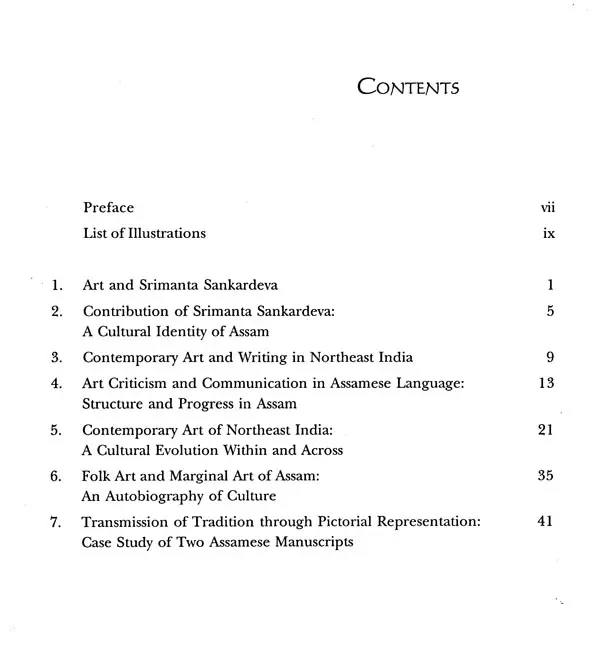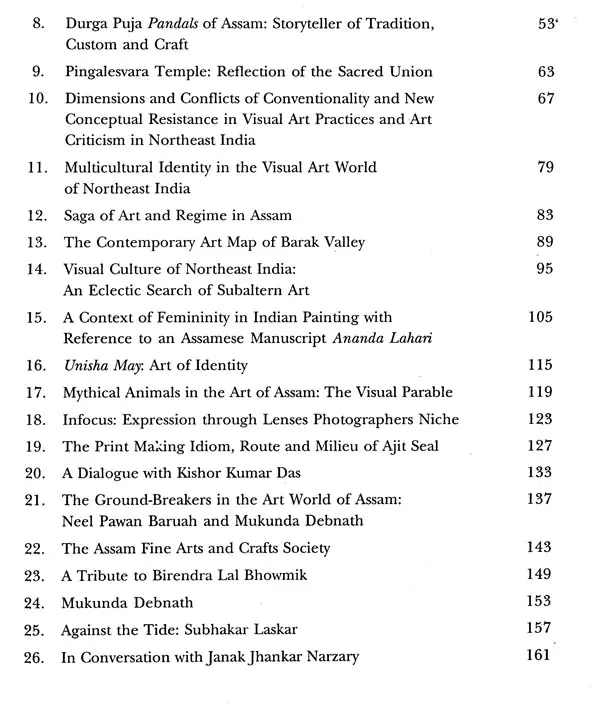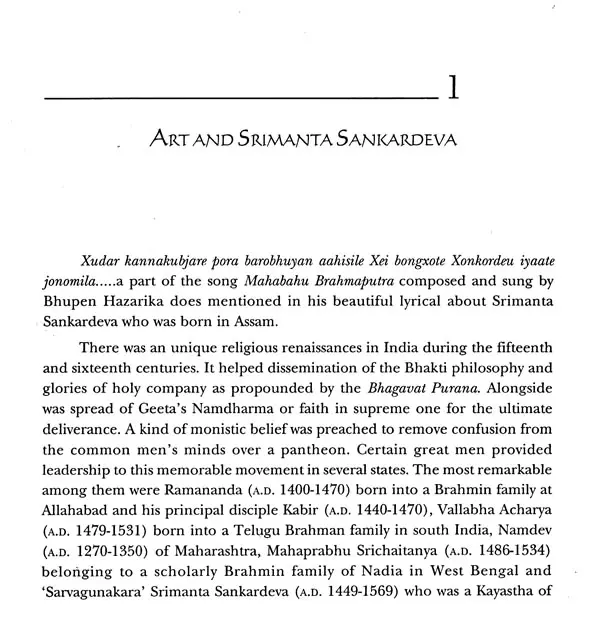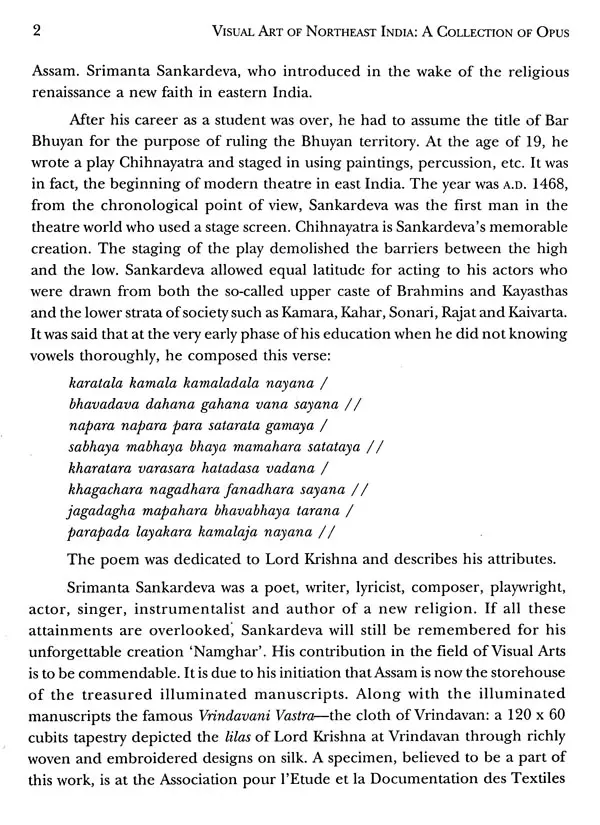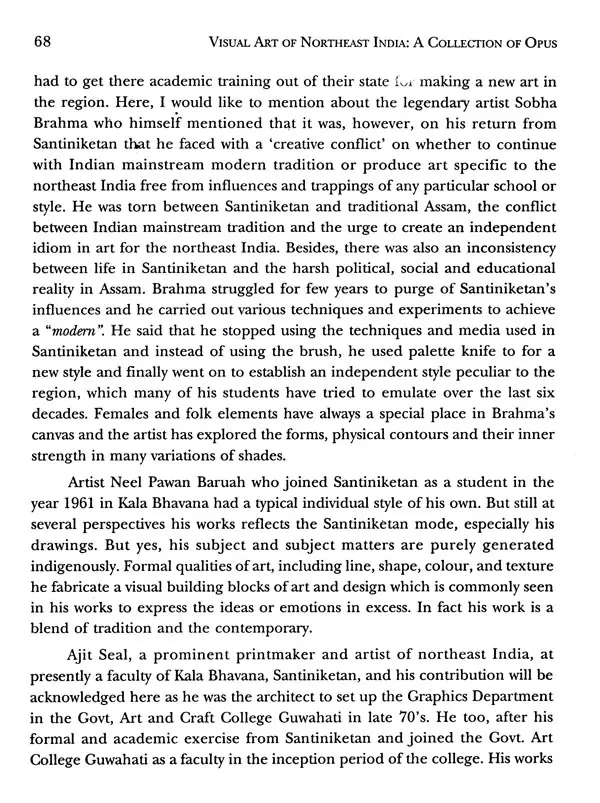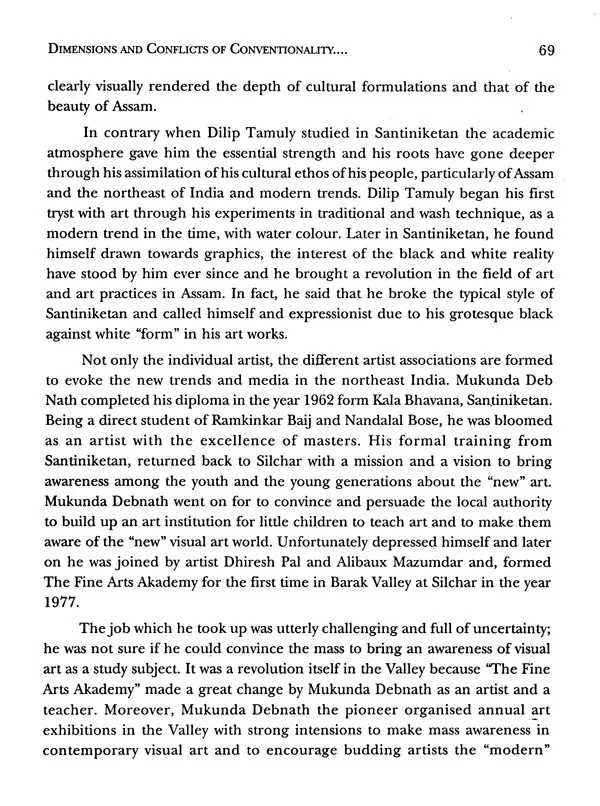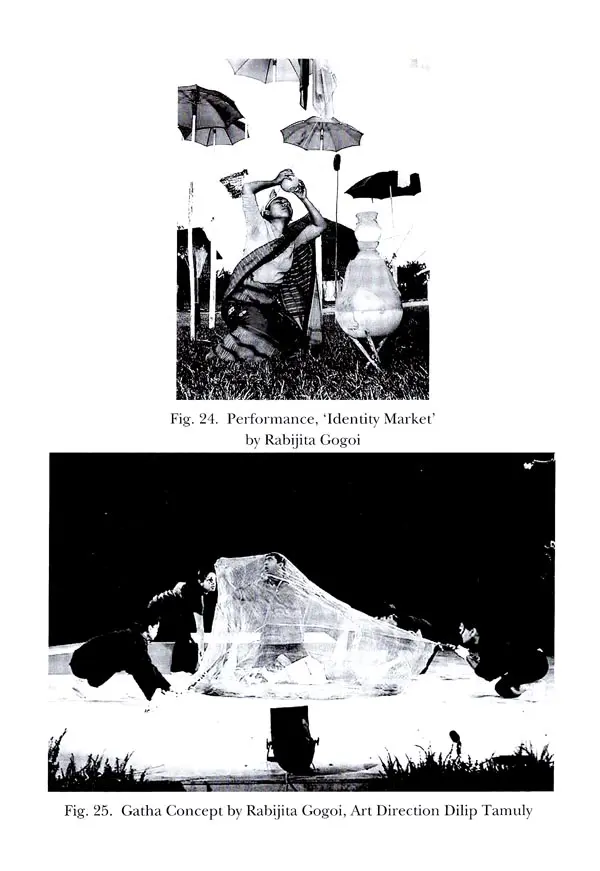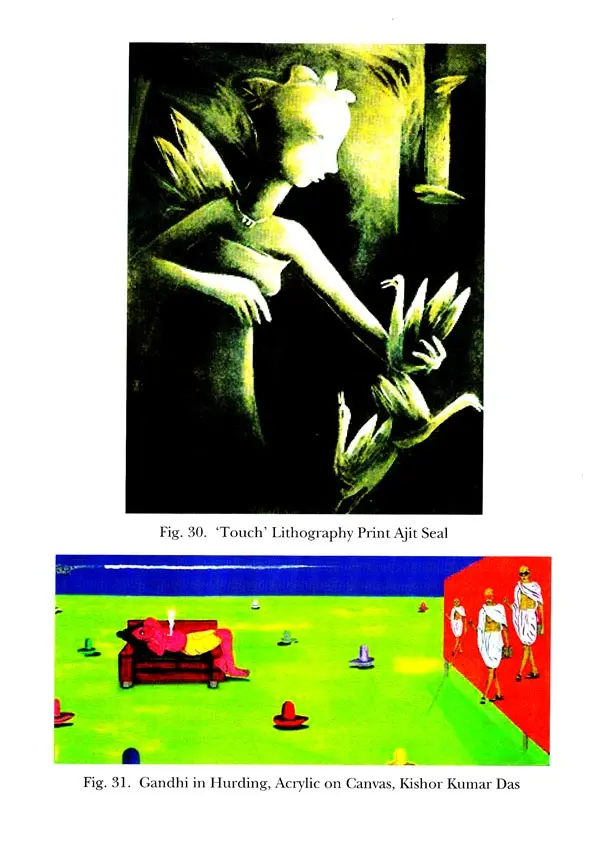
Visual Art of Northeast India- A Collection of Opus
Book Specification
| Item Code: | UAE400 |
| Author: | Meghali Goswami |
| Publisher: | Sharada Publishing House, Delhi |
| Language: | English |
| Edition: | 2017 |
| ISBN: | 9789383221172 |
| Pages: | 191 (Throughout B/W and Colour Illustrations) |
| Cover: | HARDCOVER |
| Other Details | 10.00 X 7.50 inch |
| Weight | 680 gm |
Book Description
Visual Art of Northeast India: A Collection of Opus is a book about the traditional and contemporary art practices in the region of north-eastern part of India. The sequence of the essays corresponds to different phases in the work of art of the Northeast India, and the book is informed throughout by a general interest in the conceptual and traditional relation of art and the visual language.
The essays range from a broad discussion of the traditional art practices; specially of Assam, through analysing about the folk art and illuminated manuscript of Assam. The book concentrates upon the regional development of art practices of Silchar and other parts of the region and focuses on the contribution of art institutions of that region.
The author's aim is to treat the contemporary art practices of Northeast India as a subject of serious inquiry and to provide the readers with a range of changes and development in the art practices of some regions which are not being highlighted in the global scenario.
The practice of visual art of northeast India is not a new phenomenon and it is reflected in the ancient monuments and architectures in different regions of northeast India. This book is a collection of essays which ranges. from a broad discussion of the traditional art practices; analyzing about the folk art and illuminated manuscripts of Assam and also the contemporary art practices in the region of northeast India. The book concentrates upon the regional development of art practices of regions like Silchar and focuses on the contribution of art institutions.
We all know that there was an unique religious renaissances in India. during the fifteenth and sixteenth centuries. It helped dissemination of the Bhakti philosophy and glories of holy company as propounded by the Bhagavat Purana. A kind of monistic belief was preached to remove confusion from the common men's minds over a pantheon. Certain great men provided leadership to this memorable movement in several states. In Assam too, Saint Sankardeva played a vital role not only in spreading of the Bhakti philosophy, but also in shaping up the visual culture through his religious practices. The sequence of the essays corresponds to different phases in the work of art of the northeast. India, and the book is informed throughout by a general interest in the conceptual and traditional relation of art and the visual language.
Few of the chapters highlights upon the contemporary changing trends of northeast India and also how some of the contemporary artists directly or indirectly expresses the views on their art, mainly dimensions and conflicts of conventionality and new conceptual of resistance in visual art practices.
For the last few years, I have been writing essays on the art and culture of northeast India in journals, magazines and newspapers, therefore, I felt that the articles can be complied, edited and shaped up in a book form, which will have a collection of essays of traditional and contemporary art practices and writings of northeast India with special focus on Assam. The purpose for choosing a subject on the visual art of northeast India is because the visual art of these regions are a reflection of the many different indigenous socio-cultural believes with a blend of contemporary flavor. The special focus of the book is to treat the contemporary art practices of northeast India as a subject of serious inquiry and to provide the readers with a range of changes and development in the art practices of some regions which are not being highlighted in the global scenario.
I am thankful to Sharada Publishing House, New Delhi who has accepted to publish the book.
**Contents and Sample Pages**
